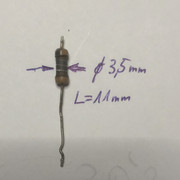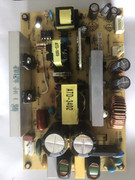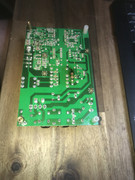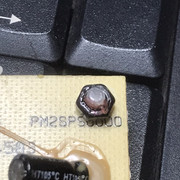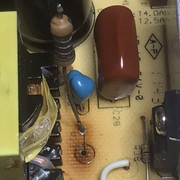|
|
Post by mastertech on Oct 29, 2015 14:46:24 GMT -5
I had no problems focusing my outer corners, its all about flare magnets and stig, and getting it adjusted right. And i dont know why you have so much drift problems, it is usually setup related, to how the boards are operating, maybe you need to start all over with a standard Marquee that is working right, and get the mecanical setup nailed right before you do geometry and convergence. Dont think its fair to judge a Marquee, for problems that might be related to you have been tampering with every board and even running different focus coils. I see that your not interested in testing lenses, but only judging them from your reference point, and that i cant argue against, as i think we have very different references. Anyway i thought this was a lens thread. But i dont think its polite leaving you all alone talking to yourself. The problems noted here with the Marquee are well known and have been documented for years. And has nothing to do with setup. His judgements are fair. A standard working marquee is a contradictory statement, LOL. Also, his judging of the lenses from his standpoint are also fair. He is merely pointing out his findings. Sometimes specific reference points can be to harsh and serve no benefit to the findings. I would say a more accurate test for him to do would be a 900 lens on green and GT17 on red, evaluate, then switch 900 to red and GT17 on green and then reevaluate. And also, there is a difference between focusing a round dot and an oval dot. |
|
Deleted
Deleted Member
Posts: 0
|
Post by Deleted on Oct 30, 2015 4:34:14 GMT -5




Some probable awfull pictures showing my terrible Marquee. This is all HFQ900 I think it shows the corner is just as sharp as the centre. Shot with iphone 4s noise. The difference with my Barco is that I could get the electronic focus sharper in the outer corners on the Barco. But the bandwidth was much lower. I think the bandwidth is more important. However for a blend the corners are more important. So I am thinking about a Barco blend so each Barco would need halve the bandwidth and needs to have perfect edge sharpness and off cause the image is going to be huge  (and no drifting) |
|
Deleted
Deleted Member
Posts: 0
|
Post by Deleted on Nov 1, 2015 5:14:20 GMT -5
In this pic I see the little edge on a 909. I have no pictures of the ringing on a Marquee yet but it goes deeper into the image, it takes more pixels. Personally I did not bother about that upper left edge but the ringing is a little disturbing me. This pic must have been at a lower resolution because the Barco does not have this much bandwidth.  |
|
Deleted
Deleted Member
Posts: 0
|
Post by Deleted on Nov 1, 2015 5:42:18 GMT -5
But common when you look at the curvature of the backplate isn't it obvious there should be a difference in the corners?  |
|
Deleted
Deleted Member
Posts: 0
|
Post by Deleted on Nov 1, 2015 5:44:18 GMT -5
I have one question about the curvature on the back of the lenses. These lenses are liquid coupled it says. But the curvature does not exactly follow the c-element on the tube So there is air in between them? Aren't they air coupled too than? And a question to Strid. Do you still think air coupled lenses are better than liquid coupled lenses? Wasn't the liquid coupled lens overhyped?  |
|
|
|
Post by gjaky on Nov 1, 2015 6:21:18 GMT -5
Liquid coupling refers to the first element of the lens which is the LC chamber actually, so the tube is coupled through a liquid lens. Unlike with AC projectors, where still there is a liquid layer but that is not an optical element.
|
|
|
|
Post by Casethecorvetteman on Nov 2, 2015 0:58:40 GMT -5
I think he is refering to a test done some time ago by Strids using an 8500 AC against a 9500 LC and measuring contrast ratio against the two, from memory his room had glass windows everywhere and very light painted walls, meaning the test's results were somewhat stacked against the 9500 LC because of the conditions present within the room.
At some point during that i believe he drew the conclusion that his 8500 measured almost as much as his 9500, and hence felt there was little advantage to LC.
|
|
|
|
Post by stridsvognen on Nov 2, 2015 6:19:30 GMT -5
I think he is refering to a test done some time ago by Strids using an 8500 AC against a 9500 LC and measuring contrast ratio against the two, from memory his room had glass windows everywhere and very light painted walls, meaning the test's results were somewhat stacked against the 9500 LC because of the conditions present within the room. At some point during that i believe he drew the conclusion that his 8500 measured almost as much as his 9500, and hence felt there was little advantage to LC. One should then wonder why i have 16 LC projectors, and only 2 AC projectors. I think what you are refering to is the test where i blocked the stray light on a 8500AC machine, and then later addet a 16:9 masking on the tube face, and documented a light output drop around 1fl just by eliminating scattered light in the asembly, and non used tube surface. 1fl of light output who only served 1 purpose, washing out the image, and dumping the ansi contrast. I did also take some ansi measurements, as you describe in a terrible inviroment, and that was pointed out quite clearly. That project was aimed to improve contrast on a AC machine wich it for sure did, and the lenses used was HD-8 lenses, not the most impressive CRT lens ever build If redfox desire to test the HD-8 AC lens against the GT17, or HFQ900, or build a liquid coupled lens in this thread it will be even more interesting. |
|
|
|
Post by jbmeyer13 on Nov 2, 2015 19:57:27 GMT -5
Regarding lens evaluation; the most difficult part is what to adjust and when. You have your lenses barrel focus (center and side), flapping, global EMF and EMF zone focus. And that assumes you have your astig set properly. Everything interacts with everything else so figuring out the precise combination can take HOURS of horsing around. It's easy to get very sharp center focus but much harder to get super sharp uniform focus down into the corners without comprimising the center. There will always be a tradeoff.
Unless you really know how to do set up well you won't be able to properly assess the lenses.
|
|
|
|
Post by Admin on Nov 2, 2015 20:11:05 GMT -5
The marquee does not have electronic stig. correct?
|
|
|
|
Post by jbmeyer13 on Nov 2, 2015 22:38:18 GMT -5
The marquee does not have electronic stig. correct? It does but not as many zones as other PJ's. Harder to set up properly than a 909 or G90. Adding frankenyokes only makes it trickier but if done properly really helps to curb blooming. Magnetics are a PITA! |
|
|
|
Post by Casethecorvetteman on Nov 3, 2015 3:22:55 GMT -5
I think he is refering to a test done some time ago by Strids using an 8500 AC against a 9500 LC and measuring contrast ratio against the two, from memory his room had glass windows everywhere and very light painted walls, meaning the test's results were somewhat stacked against the 9500 LC because of the conditions present within the room. At some point during that i believe he drew the conclusion that his 8500 measured almost as much as his 9500, and hence felt there was little advantage to LC. One should then wonder why i have 16 LC projectors, and only 2 AC projectors. I think what you are refering to is the test where i blocked the stray light on a 8500AC machine, and then later addet a 16:9 masking on the tube face, and documented a light output drop around 1fl just by eliminating scattered light in the asembly, and non used tube surface. 1fl of light output who only served 1 purpose, washing out the image, and dumping the ansi contrast. I did also take some ansi measurements, as you describe in a terrible inviroment, and that was pointed out quite clearly. That project was aimed to improve contrast on a AC machine wich it for sure did, and the lenses used was HD-8 lenses, not the most impressive CRT lens ever build If redfox desire to test the HD-8 AC lens against the GT17, or HFQ900, or build a liquid coupled lens in this thread it will be even more interesting. Yep, i remember what it was about and your claimed results, and although i did indeed support your claimed results and reason for the project along those lines, i did not agree with the test environment or the comparison to LC. If indeed you did that same test with the room conditions quite dark and only the screen able to reflect light, the results would show the LC as considerably better. My rooms here both being dark, there was a massive improvement going AC to LC, blacks were blacker, halos were gone, and dark scenes were much more detailed. Starting with such terrible conditions for a test can only serve to bring any contrast ratios down with all that ambient lighting being bounced around the room. |
|
|
|
Post by stridsvognen on Nov 3, 2015 15:19:16 GMT -5
One should then wonder why i have 16 LC projectors, and only 2 AC projectors. I think what you are refering to is the test where i blocked the stray light on a 8500AC machine, and then later addet a 16:9 masking on the tube face, and documented a light output drop around 1fl just by eliminating scattered light in the asembly, and non used tube surface. 1fl of light output who only served 1 purpose, washing out the image, and dumping the ansi contrast. I did also take some ansi measurements, as you describe in a terrible inviroment, and that was pointed out quite clearly. That project was aimed to improve contrast on a AC machine wich it for sure did, and the lenses used was HD-8 lenses, not the most impressive CRT lens ever build If redfox desire to test the HD-8 AC lens against the GT17, or HFQ900, or build a liquid coupled lens in this thread it will be even more interesting. Yep, i remember what it was about and your claimed results, and although i did indeed support your claimed results and reason for the project along those lines, i did not agree with the test environment or the comparison to LC. If indeed you did that same test with the room conditions quite dark and only the screen able to reflect light, the results would show the LC as considerably better. My rooms here both being dark, there was a massive improvement going AC to LC, blacks were blacker, halos were gone, and dark scenes were much more detailed. Starting with such terrible conditions for a test can only serve to bring any contrast ratios down with all that ambient lighting being bounced around the room. If i remember right i did not compare to a LC CRT projector, but my JVC, so again it was never intendet to be a competition to LC or anything else, it was to move a AC CRT from one point to the next, and the conditions was made very clear for everyone, as i was aware, and still are, and always will be, so the reason for bringing it up again must be something else. Im sure ill finish that test at some point when i finish my HT, who wil be darker than the devils ass at night, and i found a set of color filtered HD145 lenses on ebay for 10 euro. It will just be a personal challenge to myself, to see how far i can bring my 8500AC with a linear 250Mhz videochain and all i can do to optimize the optical path. And no ill not be able to make a comparison betwen the GT17 and the HD145 as i cant run them on the same projector, even that none of the lenses are directly liquid coupled. |
|
|
|
Post by stridsvognen on Feb 5, 2016 7:14:27 GMT -5
Was requested to prove that my P19LCP tubes/ GT17 lenses on my Marquee was able to focus in the corner, so i spent 30 min playing with the flare magnets, and adjust stig and focus in the corner to match on the tube face, my center stig is 50/50. So here is how my 1997 or 1999 build GT17 look when the magnetics glycol and stuf that is not lens related is up to it. Lets see the same from a HFQ900, and we can move on to test lens resolution after. 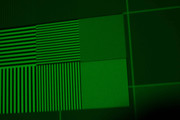 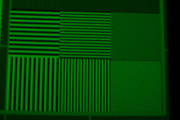 |
|
|
|
Post by jbmeyer13 on Feb 5, 2016 14:01:41 GMT -5
That image looks really soft..lol
That is plenty sharp; especially considering the fact that when watching source material we:
A) aren't looking in the corners but rather the center of the image.
B) cinemaphotographers aren't concentrating on focusing in the corners when filming either.
The better question is how is the uniformity of focus around the center of the image as it extends outward. Not hard to mess with magnetics, emf to focus in particular areas but maintaining overall uniformity always requires compromises.
The GT17 is plenty capable of getting the job done when used on a standard screen size. It's when you venture outside 90-110" where other lenses may start to provide advantages.
|
|














